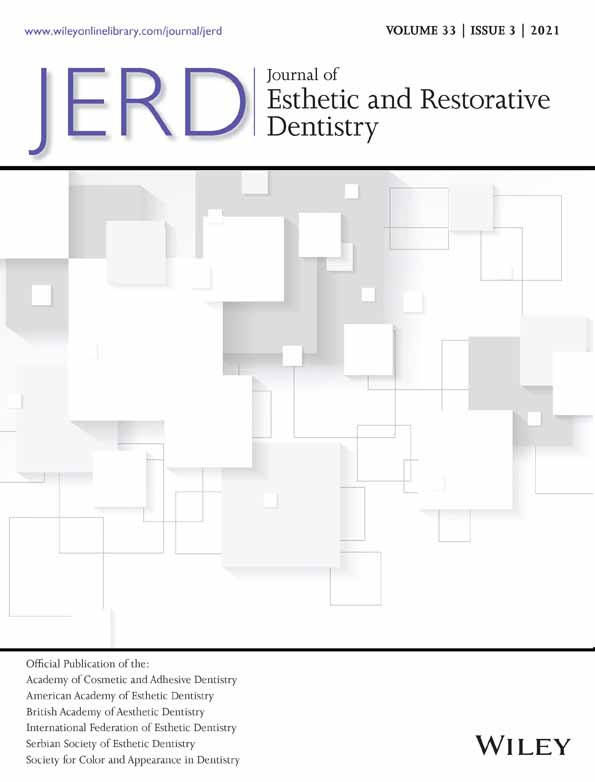Microcomputed tomography evaluation of cement film thickness of veneers and crowns made with conventional and 3D printed provisional materials
Funding information: Fondo Nacional de Desarrollo Científico y Tecnológico, Grant/Award Number: 11170920
Abstract
Objective
To evaluate, through microcomputed tomography (μCT), the cement film thickness of veneers and crowns made with different provisional materials.
Material and Methods
A veneer and a crown preparation were performed on a central incisor and a second molar of a dental model, respectively, scanned with an intraoral scanner, and the .stl files were exported to an LCD-based SLA three-dimensional (3D)-Printer. Twenty-four preparations were 3D-printed for each veneer and crown and divided into four groups (n = 6/group): (a) Acrylic resin (Acrílico Marche); (b) Bisacrylic resin (Protemp 4); (c) PMMA computer-aided design and computer-aided manufacturing (CAD-CAM) (Vipiblock); and (d) 3D-printed resin for provisional restorations (Raydent C&B for temporary crown and bridge). Veneers and crowns restorations were performed and cemented with a flowable composite. Each specimen was scanned with a μCT apparatus, files were imported for data analysis, and cement film thickness was quantitatively measured. Data were analyzed by 2-way ANOVA and Tukey post-hoc tests (α = .05).
Results
Crowns presented a thicker cementation film than veneers (P < .05).The bisacrylic resin showed the smallest veneer film thickness, similar to the acrylic resin (P = .151), which was not significantly different than the PMMA CAD/CAM material (P = .153). The 3D printed provisional material showed the thicker film, different than all other materials (P < .05). The bisacrylic resin showed a cement film thickness with a high number of voids in its surface. For crowns cementation, the 3D printed provisional material showed the thicker cementation film, different than all other materials (P < .05).
Conclusions
Different provisional materials present different film thicknesses. The 3D printed provisional material showed the highest veneer and crown film thicknesses. Veneers film thicknesses were smaller than crowns for all provisional materials.
Clinical Significance
The 3D printed provisional material studied can be satisfactorily used, presenting appropriate adaptation with the tooth preparation, however, it shows the highest cement film thickness for both veneers and crowns cementations when compared with other provisional materials. A better internal fit, or smaller cement film thickness is obtained by CAD/CAM materials, acrylic and bisacrylic resins. Veneer cementation showed a smaller cement film thickness compared with crown cementation for all provisional materials.




